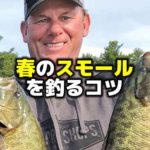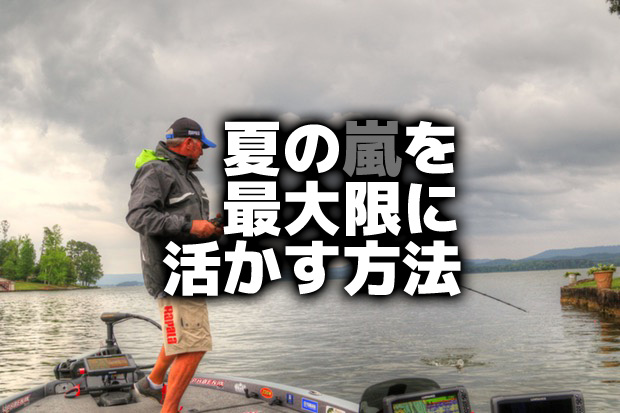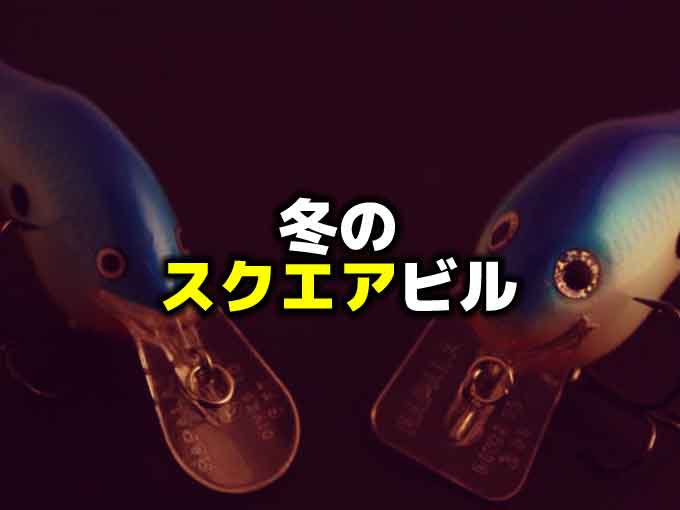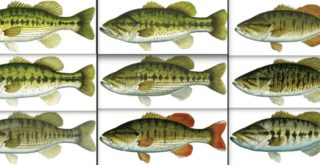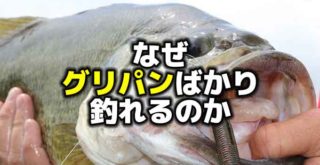川のバス釣り攻略!流れのレベルを3つに分けて考える

Photo by scout.com
こんにちは!店長の小山です!
本日は海外サイトより、”Learn the 3 Level Rule of Fishing Current”という記事を引用してご紹介いたします。
引用先:scout.com”Learn the 3 Level Rule of Fishing Current”ByTYLER ANDERSON Jun 18, 2018(海外サイトです)
川のバス釣り。川というのは結構特殊なフィールドだと思います。日本の池、湖、ダム湖などといいますと、多くの方のイメージは共通するのではないかと思いますが、川といいますと、ひとくちでは分類出来ないほど多くの様相を持っていますよね。
大きな川、小さな川、上流の清流、下流の太い流れ、水路や運河など流れのない川、護岸の有無、などなど、川のバス釣りといってもその地域やその人によってイメージする川は全く異なることと思います。
私は川のバス釣りも大好きでこれまで色んな川でバス釣りをしてきましたが、個人的には、川という以上は、できれば流れている方が好きです。
流れがあることでバスの付き場を読むことや、タックル選びも他のフィールドとは違って考えなければならないことで、頭の中のバス釣りを川専用に切り替えなければならないのですが、この頭の中の作業がまた楽しくて、そういう「思考の切り替え」みたいなものが、脳を活性化させ、ストレス解消に一役買っているのではないかと思います。
そういう考え方だけで川のバス釣りが楽しいというだけならいいのですが、実際に釣れるかどうかというとそれはまた別の話で、より楽しむためには、やっぱり釣りたいは釣りたいものです(笑)
この記事は、アメリカのバスフィッシングメディア「Wired2Fish」の記者、テイラー・アンダーソン氏と友人とでクーサ川という川でのバス釣りをしたときの経験をもとに、流れのレベルに応じて釣りの解説をしてくれています。
多くの人が違うイメージを持つ川というフィールドですが、読む人の流れのイメージを統一しつつ、流れのレベル別に読めるというのはとてもありがたいことだと思います。
川のバス釣りがお好きな方は、ぜひ読んでみてください。
レベル1:流れの中
It’s important to understand that bass cannot hold in swift current all day; they simply don’t have the energy. It would be similar to a human running on a treadmill for 24 hours a day. That’s insane, right?
Bass must take breaks to sleep, rest and regain all of the energy they burn while feeding and moving in current. This is why casting directly into the strongest current may not be the best strategy. When bass are positioned in direct current, they’re most likely traveling from eddy to eddy, searching for their next resting spot or ambushing unsuspecting bait balls floating helplessly down the current.
Keep in mind, however, that bass are lazy animals; they will take the path of least resistance whenever possible, so they’ll spend much less time in “level one” compared to the others.
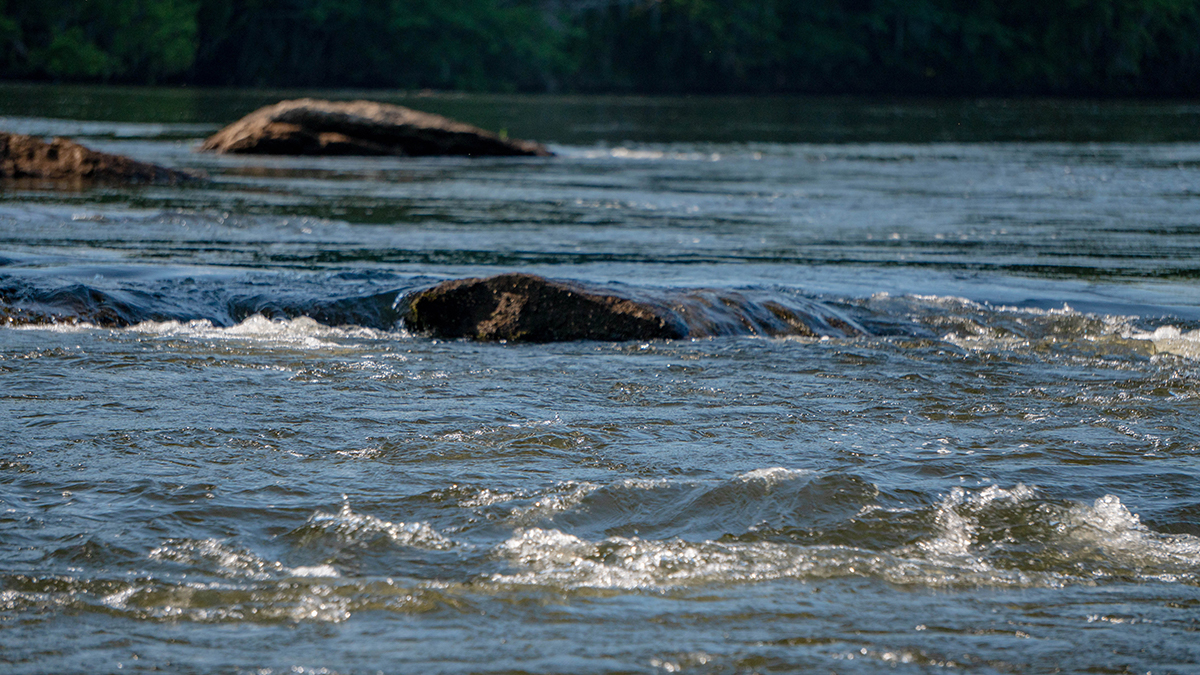
Photo by scout.com
バスは一日中速い流れの中にいることができないと考えることが重要です; 彼らは、シンプルにそれだけのエネルギーがありません。
人間で例えれば、1日24時間ずっとランニングマシーンで走っているようなものです。どうです、正気とは言えないでしょう?
バスは流れの中のフィーディングで動いた分のエネルギーを取り戻すために、休憩をとったり眠らなければなりません。 このため、強い流れに直接キャストするのがベストな方法ではない可能性があります。 バスが流れのなかにいるときでも、流れのゆるいところゆるいところを移動し、次の休憩地点を探したり、流れてくるであろうベイトの群れを待ち伏せています。
しかし、バスは怠け者の動物であることを覚えておいてください。 彼らは可能な限り通りやすい道を通るので、他のものと比べてこの「レベル1」では、多くの時間を過ごすことはないでしょう。
レベル2:待ち伏せ場となるゆるい流れ
You’re also likely to find fish positioned in the slack water—or eddy—created by a piece of cover in the water. These current breaks are created by features such as branches protruding from the bank, a pile of rocks or large individual rocks. Even grass patches and weed lines can create breaks in the flow of current.
Fish will use these eddies to rest from the current, often waiting on shad or crawfish to be swept down the river. They can then shoot out quickly, grab their meal and return to the calm water to repeat the cycle throughout the day. Their prey may just float by, but can also drift into the eddy to rest, not knowing it may be the last rest they ever take.
“Level two” bass are the easiest to target, as you’re often casting to a very small, visible area. The slack water will allow you to feel your lure and set the hook much easier than fishing in the current itself.
When approaching these current eddies, it’s tempting to troll right up to the rock or laydown and start pitching. You may not realize, however, that there’s often more than meets the eye and there may be more cover you can’t easily see. If you start farther from the eddy and fish the area just down-current from what you can see, you may be surprised by how many fish you can catch in a small area.
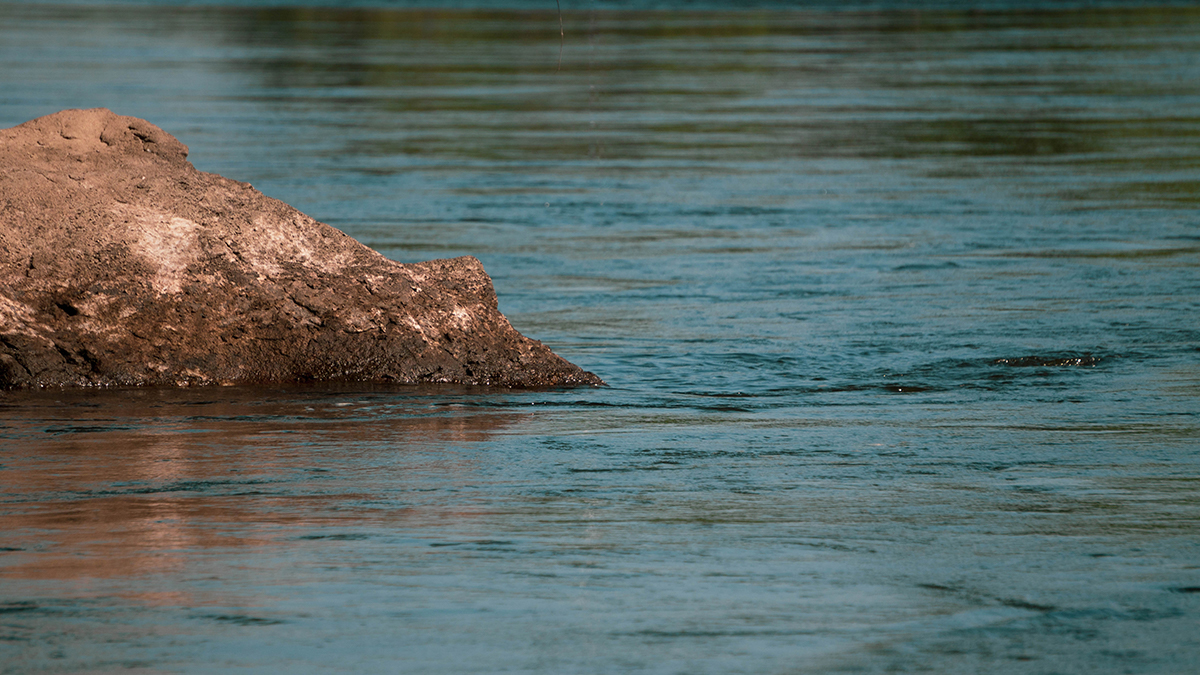
Photo by scout.com
水中のカバーによって作られるゆるい水流や渦の中で魚を見つける可能性があります。これらの流れを遮るもの(カレントブレイク)は、バンクから突き出た枝、ロックパイル、また大きな岩や個々の岩石のようなものによって作り出されます。ウィードパッチやウィードラインでさえ、流れを遮ることができる可能性があります。
魚はこれらの渦を使って流れを回避します。そこで、川に流されてくるシャッドやザリガニを待っています。流れてきたら素早く飛び出し、食事をしたら穏やかな水に戻るということを、1日を通して繰り返しています。エサとなるものは浮いて流れてくることもあり、休憩所となるその渦にうまく流されてくるようであれば、ずっとそこで食べ続けることになるかもしれません。
小場所であり目に見えるエリアにキャストすることになるため、「レベル2」のバスをターゲットにするのが最も簡単です。ゆるい流れは、流れの中の釣りよりも自分のルアーを感じることができ、フッキングも容易になります。
これら流れの渦にアプローチする時、ピッチングをして岩やレイダウンまで流し釣りをするのが正解と思いがちです。しかし実際には、目ではよく見えないところに他のカバーがあるということもあるかもしれません。その渦より遠くから釣り始めて、目で見えるカバーの下あたりまで釣ることで、その小さなエリアで何匹もの魚を釣ることができることに驚くことでしょう。
レベル3:微妙な流れにはアグレッシブなバスが付く
While fishing on the Coosa River, my friend and I tried to catch fish in the current breaks and in the current itself, but we found neither the quality or quantity of fish we were expecting. That is, until we started to target the areas with more subtle current. When we began fishing these areas, the action was incredible.
Bass, being a bit smarter than we give them credit for, will often do a little bit of work on their end for a giant payday of food, especially when they’re hungry.
The crawfish were spawning on a full moon and it was the first time this year that the crawfish had really moved out of the rocks and into the current. This made for easy, quick meals for the bass. But due to the location of the crawfish in the slow current, the bass had to keep themselves in that current to gather as much food as they could. The bass in this third category are often the most fun to catch, as they are actively hunting, unlike the bass mentioned in the first two categories.
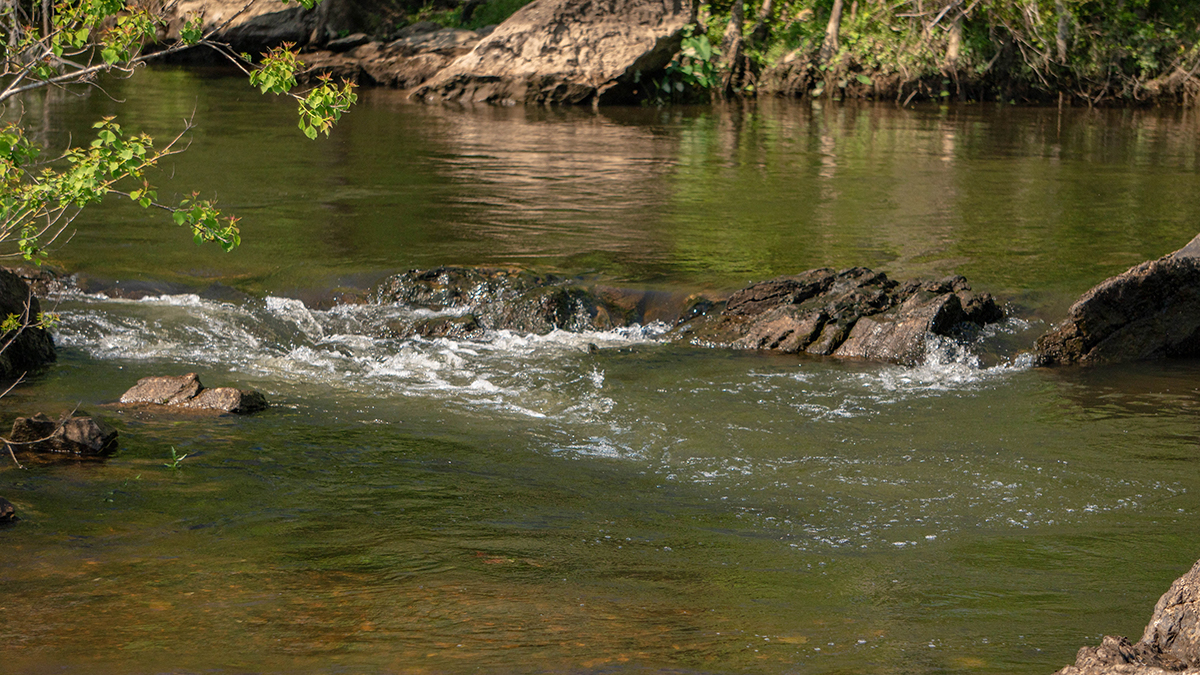
Photo by scout.com
クーサ川で釣りをしている間、友人と私は、流れの中やカレントブレイクで魚を捕まえようとしましたが、期待していたクオリティの魚も数も見当たりませんでした。 そうです、私たちがもっと微妙な流れのエリアをターゲットにし始めるまでは、です。 私たちがこれらのエリアで釣り始めたとき、自分たちの行動は自画自賛に値するものでした。
バスは、私たちが思うよりもはるかに賢い生き物で、特に空腹のときに多くの食べ物にありつけるようであれば、さっさとその日の仕事(フィーディング)を終わらせます。
ザリガニは満月に産卵します。今年最初の産卵を迎えて、ザリガニは岩場から出て流れの中へ向かいました。 これはバスにとって簡単でしかも素早くありつける食事が作られたようなものです。 しかし、ゆっくりとした流れの中にザリガニたちがいるため、バスもできるだけ多くの食糧を得るために、その流れの中にとどまっていなければなりませんでした。 最初の2つのレベルで述べたバスとは異なり、このレベル3のカテゴリのバスは、最も楽しい釣りを提供してくれます。
川用ルアーその1:スクラウンジャー
In most rivers and streams, your bass are going to be feeding on small-sized shad, crawfish or both simultaneously. These two types of forage are best suited to survive in current as opposed to other common bass forage species, such as bluegill.
When imitating these bite-sized shad, I most often choose a scrounger head with a small swimbait trailer. The scrounger has become a big-time ledge fishing bait on larger bodies of water, but it can be applied to any shallow, current-oriented situation as well.
In my experience, the water displacement created by a scrounger tends to outperform traditional swimbait setups due to its ability to attract attention. It emits an intense vibration, similar to a bladed jig or crankbait, which allows current-oriented bass to find it with less effort. My favorite combination is the Jenko Fishing Tennessee River Tremor Jig Head, paired with a 3 3/4-inch Strike King Rage Swimmer. These two choices imitate most intermediate-sized baitfish and can be used throughout the country.
The scrounger really finds its place on my deck in levels one and three, when the fish are actively feeding or traveling. It can be fished very quickly, allowing you to cover a lot of water, which increases your efficiency throughout a day of fishing. When retrieving the scrounger, I use a constant retrieve with intermittent pops and pauses.
ほとんどの河川や小川では、バスは小さなサイズのシャッド、ザリガニ、またはその両方を食べているでしょう。これらの2種類のベイトは、ブルーギルなど他の一般的なバスのベイトとは対照的に、流れの中での生存にも適しています。
これらの一口サイズのシャッドを模倣するとき、私はほとんどの場合、小さなスイムベイトトレーラー付きのスクラウンジャーヘッドを選択します。スクラウンジャーは、大きなフィールドでの棚(段差)を釣る時のルアーとされていますが、浅く流れのあるような場所にも適用できます。
私の経験では、スクラウンジャーによって発せられる波動は、スイムベイトだけの場合よりも注目を集める能力としては上回る傾向があります。これは激しい振動を発します。チャターベイトやクランクベイトにも似ています。これにより、流れの中のバスをより少ない労力で見つけることができます。私の好きな組み合わせは、ジェンコ・テネシーリバートレマージグヘッドと、3.75インチのストライクキング・レイジスイマーです。この2つは、ほとんどのサイズのベイトフィッシュを模倣し、全国どこでも使用することができます。
スクラウンジャーは、レベル1とレベル3の状況で魚が積極的に回遊やフィーディングをしているとき、私のデッキでよく目にすることができます。これは非常に早い釣りができます、一日を通して広いエリアをカバーすることができ、釣りの効率を高めることができます。 スクラウンジャーをリトリーブするときは、断続的なポップ(トゥイッチ)とポーズを使います。
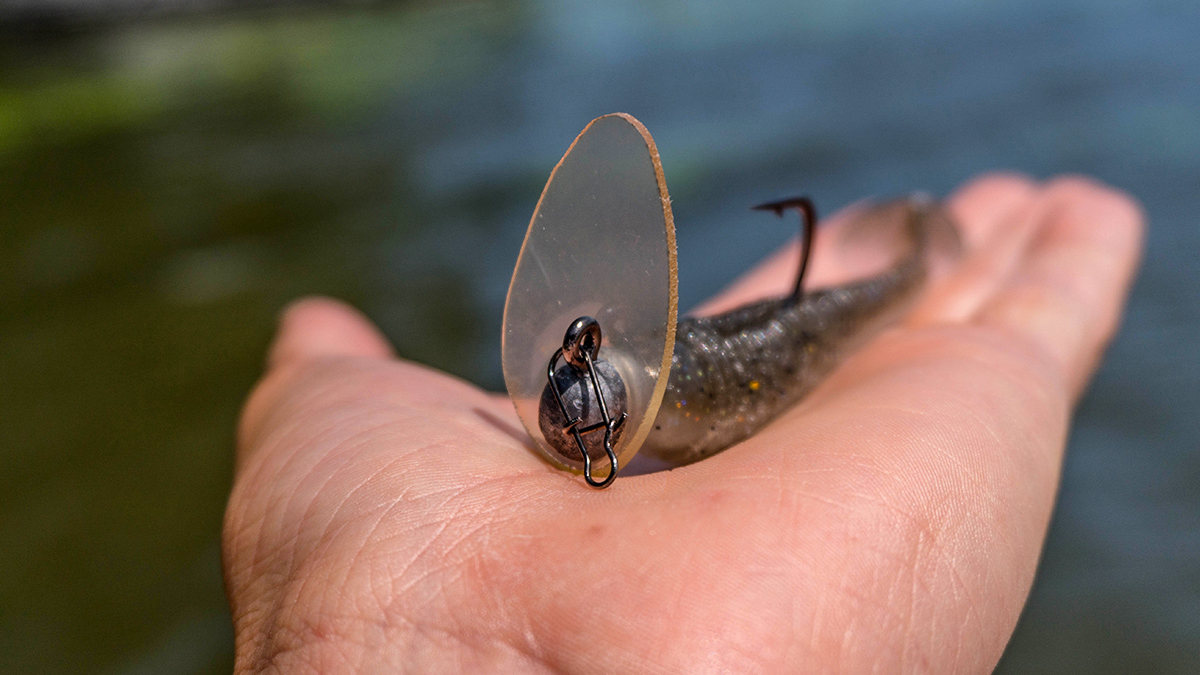
スクラウンジャーヘッドと小型スイムベイト Photo by scout.com
川用ルアーその2:フィネスラバージグ
When crawfish are on the menu for current-oriented bass, you’d be hard-pressed to find a better imitation than a finesse jig. The profile and build of a finesse jig allows you to work it in and out of cover easily, while also maintaining a good hookup ratio due to its small profile.
You’ll have a lot of success with a finesse jig when the bass are sitting in slack water created by cover. Your high-percentage areas are going to be those you can see and cast to. I have also caught several quality bass with a finesse jig in moderate current, but for the most part, my bigger bites come in the eddies.
When retrieving your jig, imagine what a crawfish would do when it’s caught in the current. Crawfish don’t have much control over their bodies due to their rigid exoskeleton, so as soon as they get caught in the flow, they essentially have no choice but to ride along, bumping along the bottom. If you feel a slight change in tension, it’s time to set the hook. Bites are often characterized by complete slack; this happens when the bass initially bites the jig and retreats back into the eddy to finish its meal.
Current can be a major key to finding large populations of bass throughout much of the year and to be quite honest, it scares a lot of anglers away. If you can crack the code and figure how what to target and which lures to use, there’s a great chance you’ll have this special bite all to yourself.
ザリガニが流れの中のバスのメニューになっているときは、フィネスジグよりも優れたルアーを見つけるのは難しいでしょう。フィネスジグの形と造りにより、カバーの内と外での操作がしやすくなっています。また、小さなシルエットのためにフッキング率も良くなります。
バスがカバーによってできたゆるい流れの中にいるとき、フィネスジグは多くの成功を収めます。あなたの目で見えるバスの居る確率の高そうなエリアでキャストするべきでしょう。私もまた、適度な流れの中でフィネスジグでいくつかのハイクオリティなバスをキャッチしましたが、多くの場合、ビッグバイトは渦の中でした。
ジグをアクションさせるときは、ザリガニが流れの中に入った時にはどんな動きをするだろうということを想像してください。ザリガニは硬い外骨格で体を包まれているため、流れに巻き込まれると基本的には流されるか底を這って進むしかありません。ラインテンションにわずかな変化を感じたら、フッキングをするときです。バイトは、ラインがたるんでいる時に特徴的なことが起きます。それは、バスがまずジグにバイトして、それを食べるために渦のほうへ戻るということが起こります。
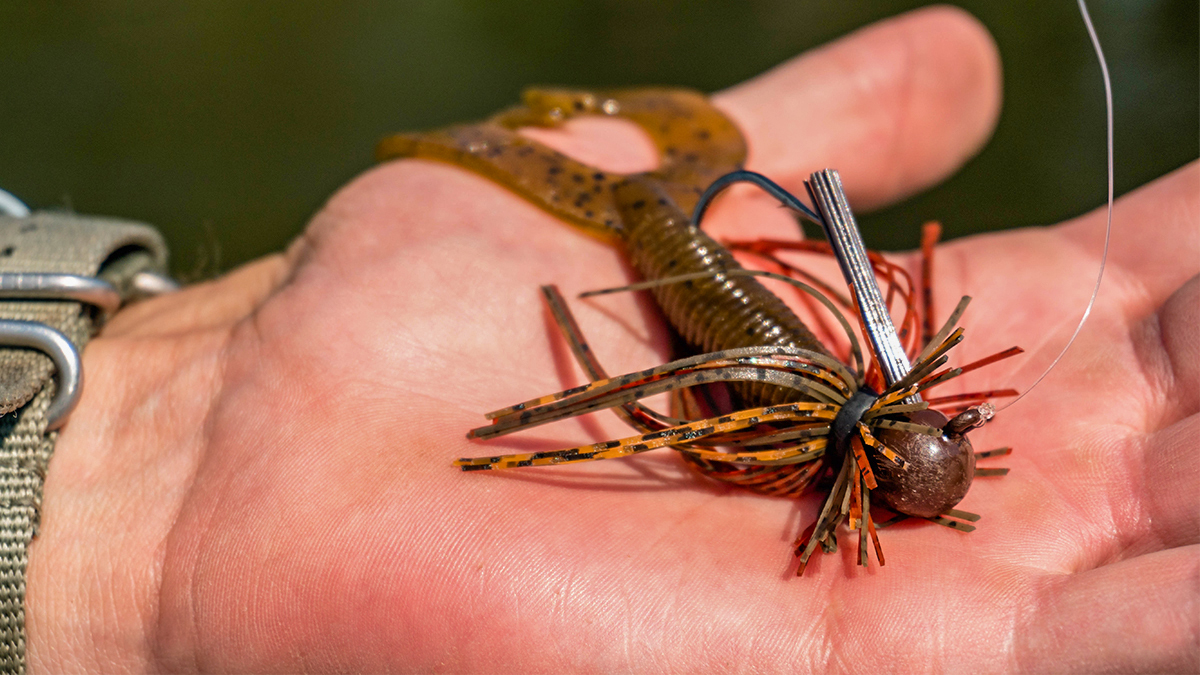
Photo by scout.com
いかがでしたか。
バスも他のフィールドと同じように、川の中のどこにでもいるというわけではありません。
川の最大の特徴である流れが、バスの居場所を決め、居場所によってバスの状態や行動が変わるということなんですね。そして他のフィールドと同じように、バスの居場所を見つけてしまえば、年間を通して同じ場所でバスと釣ることが可能になったりします。
川のバス釣りが苦手という方は、もしかしたら、流れを読んでのバスの居場所の絞り方や、ルアーのアプローチやルアーの使い方や使いどころにまだ慣れていないだけなんだと思います。
私も川のバス釣りが好きですけど、得意というほどではないので大きなことは言えませんが、その流れを読んだりすることが最大の楽しさだと思いますので、ルアーの流し方やシンカーのウエイト調整など、色々試していただければと思います。
ラインの太さも、太ければ流の影響を受けてしまいやすいですし、細くするとテトラなどにやられてしまいますし…悩むところです。
また、フィールドの長さと流れがあるおかげで、いいポイントに入れれば、こちらが移動しなくてもバスの方から一定の時間おきに回遊してきてくれることも多いので、楽ちんですよね(笑)
この記事は流れがあるような川を前提としたものになっていますので、そういう川でないフィールドはまた勝手が違うかと思います。そういう方は、この記事に当てはまるようなシチュエーションを探して釣りに出かけてみるのもまたいいのではないかと思います。
川の釣り、楽しいですよね!
それでは、また。
毎度ありがとうございます!







